This week I want to feature the knowledge exchange and community engagement activities of members of the Kent History Postgraduates group over the weekend at Dover Museum and at the Dover Maison Dieu as part of the CKHH. However, before I come to that I shall be reporting on the latest Kent History Postgraduates Group meeting where Carrie Woollard gave an extremely interesting presentation on her research project to her fellow postgraduates, an invaluable opportunity to try out new ideas and findings to an engaged and supportive audience.
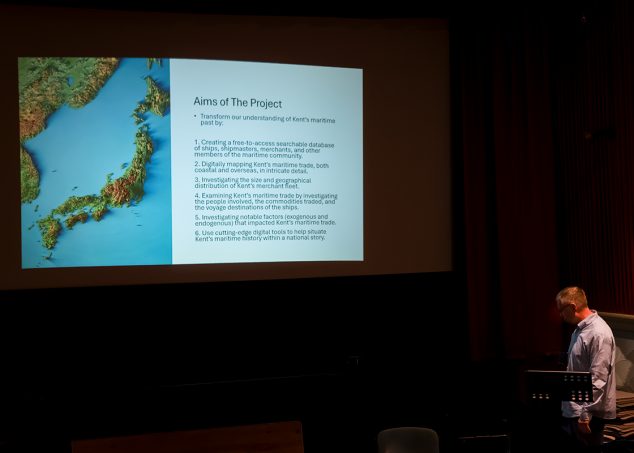
There was a good-sized group of KHP students gathered in the Anselm Boardroom for the monthly meeting, and after a few technical issues, we were able to bring in the online audience as well for Carrie’s presentation. Carrie is in the second year of her PhD and her research project where she is investigating the archaeology of childhood during the Iron Age in England. This means she is seeking to explore what osteoarchaeology can tell us about funerary rituals concerning children in prehistory. She was attracted to this topic because until relatively recently archaeologists have paid very little attention to the burials of children, their skeletal remains, the manner and place of burial, and any evidence of the presence of grave goods. Indeed, as she said there are examples of archaeological excavations where the infants’ skeletons have either been destroyed or lost with any accompanying paperwork because they were not seen to be of any interest in terms of serious research.
As Carrie said, this has changed and far more attention is now paid by researchers to where such infant burials are found, such as in post holes, under buildings or elsewhere. Furthermore, there is far greater analysis done regarding the burial context, such as the skeletons themselves and whether there are grave goods. For the latter, Carrie highlighted what seems to have been the importance of learning through play because various types of miniature tools have been recovered. It is suggested that these point to children learning both how to make such tools and how to use them, thereby contributing to their community’s survival, as well as the socialization of youngsters. Fishing was one such activity but there is also evidence of children mining, including working in the salt mines in Austria during the Iron Age. The importance of child labour, of course, is similarly seen in medieval textual sources such as coroners’ inquests following sudden death (see Barbara Hanawalt’s work) and through to Victorian society but worldwide is still a factor in some societies today.
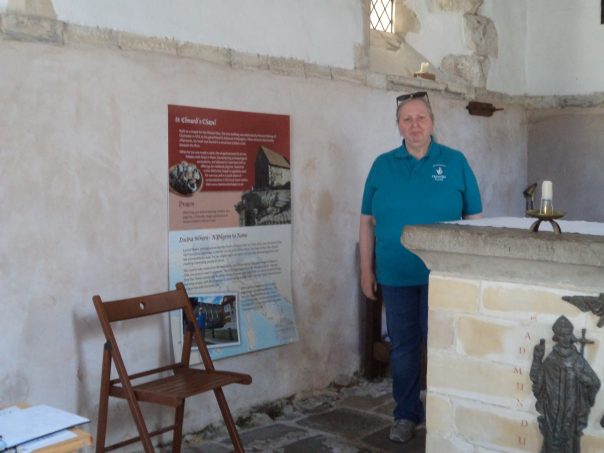
Carrie also discussed that these days far more attention is attached to looking more closely at women and their likely roles within prehistoric society, as well as how this seems to have affected how they were buried. What seems to be emerging is that funerary rites and burial was less focused on the individual and more on the social needs of the community. The use of material culture is important in this context and the community’s desire to control women’s bodies. Nevertheless, this analysis remains problematic because all researchers have to work on is the archaeology, albeit it may be feasible to look to other disciplines for theoretical ideas and of these, social anthropology may be the most fruitful. Yet, it remains helpful to remember that ‘the past is a foreign country, they do things differently there’.
Carrie’s presentation generated a large number of questions and comments from the other postgraduates, leading among other things to a discussion concerning whether it is appropriate to draw on modern ideas about emotional responses to the loss of young children, and if it is, how it can be done while takes account of cultural differences, as well as more universal human responses. At the conclusion, all agreed it had been a thought-provoking paper and it had been great to have something so different from the topics of everyone else. And next month it will be Jason Mazzocchi, while Lizzie Burton will give the July presentation, which she will use a practice before she gives a paper at the Journal of Social History conference later that month. Furthermore, this will be the last before I am made redundant from CCCU. So thanks very much to the many postgraduates who have been giving such presentations to their peers since the group started in 2017, we have enjoyed many memorable, great papers covering topics chronologically from prehistory to the Second World War, and topics as wide-ranging from medieval Jews to the history of hunting grounds. Furthermore, most of the postgraduates have since gone on to give papers at academic conferences and at outreach events for the public, the KHP group having provided a first step on this journey.
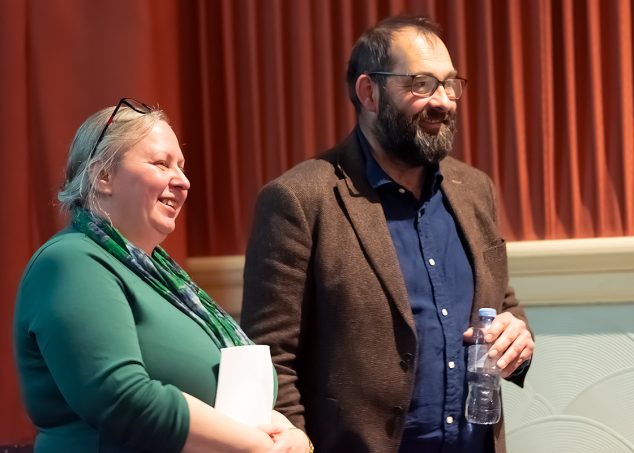
Such an outreach event took place on Saturday when the CKHH was at the community cinema attached to Dover Museum to celebrate the next milestone in the ‘Kent Maritime Communities’ project, the launch of the project’s new searchable website that offers materials on ships, cargoes, voyages etc linked to Kent. This study day featured 7 talks, including those by the four members of the project team and the two CKHH postgraduates working on allied doctoral projects. We started with the latter and the first presentation was given by Kieron Hoyle. It was entitled ‘‘The better safekeeping of her Majesties provisions’: improvements in Tudor victualling and the Maison Dieu’ and Kieron used the opportunity to try out some ideas because she will be giving a paper under the same title at the Society of Renaissance Studies conference at Bristol in the early summer.
Even though this is still work in progress, Kieron’s paper on Saturday featured the victualling system and how it developed under Edward Baeshe from ad hoc arrangements with inconsistencies, inefficiencies and certain fraudulent practices to an organised and efficient structure that could be replicated. For as Kieron discussed, Baeshe’s innovations included the establishment and development of designated victualling yards, as well as the introduction of a standardised rationing system for the navy. For he saw it as essential that the rations provided should be consistent in quality and quantity because this would improve the sailors’ health and morale during voyages and for those stationed on land. Furthermore, Baeshe was responsible for streamlining the co-ordination between the naval authorities and civilian suppliers, thereby reducing waste and enhancing efficiency. Consequently, even though the Armada occurred after Baeshe’s death, Kieron considers his work fundamentally contributed to the success of the English ships for his improvement of the navy’s operational efficiency meant that it was ready to mount such a maritime defence of the realm.
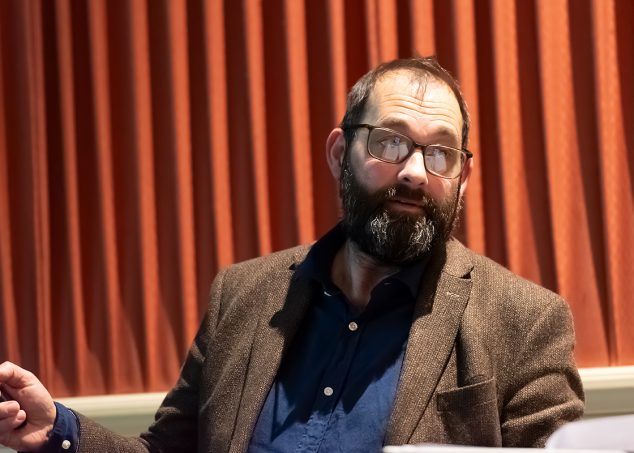
Additionally, as a way of investigating the importance of place he used a range of maps from the late medieval Gough map to Symonson’s c.1596 ‘Description of Kent’, as well as the detailed maps produced in conjunction with the late Elizabethan/early Jacobean oyster dispute over the Pollard fishing grounds in the estuary close to Faversham. These offer ideas about inter-relationships, proximity, ownership and use for the town’s leading individuals and families which can be exemplified further through the probate records, as shown by those of Robert Colwell, Richard Tylman and Christopher Fynche, as well as through the Port Books with their details of ship masters and owners, the merchants and their cargoes, and the distribution networks of the voyages undertaken.
Both presentations resulted in a considerable number and range of questions from the highly engaged audience, who were keen to learn and understand more about these maritime communities and how they had operated in late Tudor times. This therefore set up the day extremely well and after an early lunch, the study day recommenced with Craig Lambert’s (University of Southampton), as the project lead, providing a brief overview of the Kent Maritime Communities project, how it has developed and its outcomes.
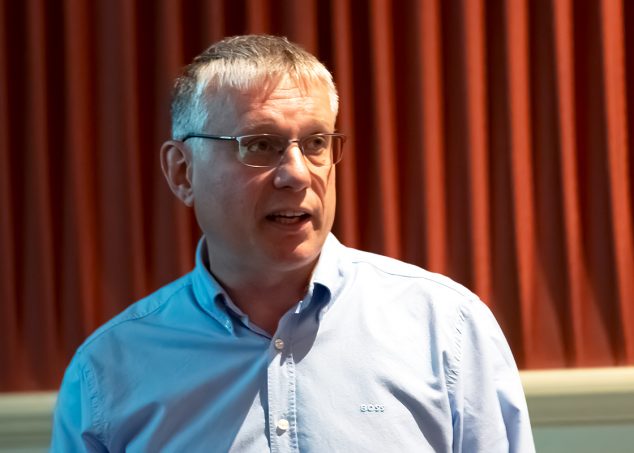
One of these outcomes is a book which will be published in October 2025: https://boydellandbrewer.com/9781837651504/kent-and-europe-1450-1640/ and the next three presentations discussed aspects from some of the book’s chapters to highlight the range and depth of this new scholarship on Kent’s relations with Europe during this critical period. So in brief, I looked at late medieval Kent up to c.1550 as a ‘gateway county’ exploring this time the influx of ideas (last year I had looked at people and others were looking at goods) under the headings economic, cultural and religious. Just to mention an example from each, for economic I investigated the change from ale to beer brewing, the geographical spread over time of such enterprises, leading by the later 15th century to there being such brewers from Sandwich in the east to Appledore in the west. Moving on to cultural ideas, I turned to the evidence across Kent for an awareness of new humanist ideas, as well as the presence of a printer in Canterbury in the 1530s and thus local access to printed materials including some evangelical works. This took me to religion and, amongst other things, the importance of the new devotion in the county from the 1460s of the ‘Name of Jesus’ and the spread of the celebration, especially in the Canterbury diocese of the Jesus Mass.
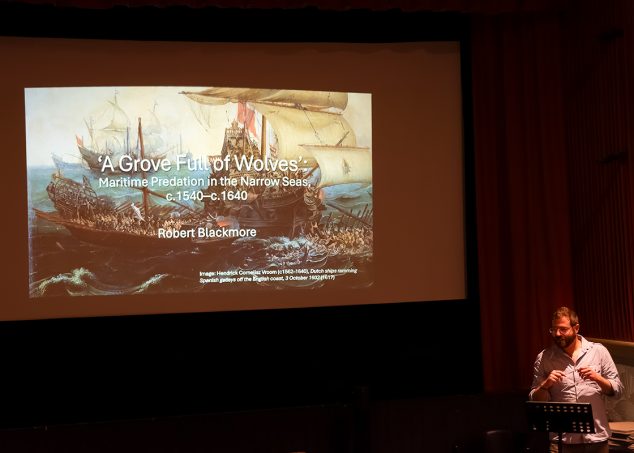
The next presentation by Dr Robert Blackmore (University of Southampton) was, as he said, less positive because he explored the incidence and level of ‘maritime predation’ in the English Channel. As part of this he investigated why and how such activities might have been undertaken, who was involved, what they were taking in terms of commodities and what they were doing with the goods (and men) once taken by force. Robert has found some extremely interesting examples, and it seems that in the early 1570s Dover had become somewhat of a market for such stolen goods. These varied but apparently sugar and spices were important, as were raw materials and manufactured items, including pins, and of what might be seen as staples cheese was high on the list. Moreover, the local authorities sometime turned a blind eye to such activities and reciprocal pillaging was not unknown suggesting that Kent in this context should be seen as a frontier society in the same way as the Marches of Wales and Scotland. Robert also touched on the subject of wrecks and wrecking, but he thinks that rather than seeing these activities as constraining maritime commerce, they were seen by contemporaries as known risks and just part of the system.
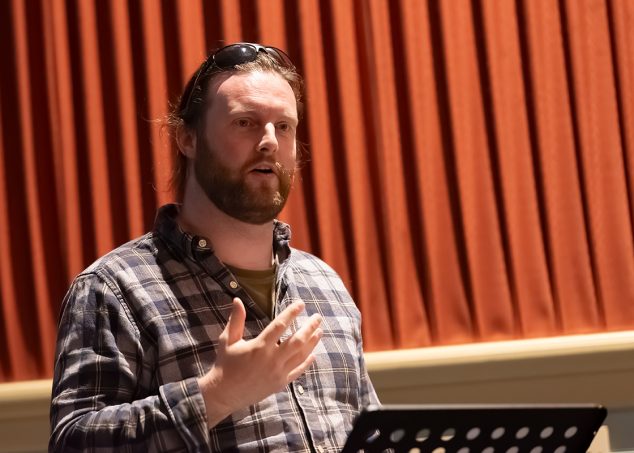
Again, this generated a series of questions and comments from the audience, which took us through to the final session. After a short break, Dr Gary Baker (University of Southampton) began this by examining the system of device forts and other defensive structures that were constructed from Henry VIII’s reign onwards at various coastal towns, especially along Kent’s east and south coasts. To complement these, he looked at the role of garrisons, their size and make-up over time, and just how great a drain this was on the county. A further area in relation to defence is the muster rolls, and even though there are relatively few detailed surviving records, in some cases these even go down to listings by street. Consequently, by drawing all of this information together, Gary was able to show that there were definite peaks and troughs in terms of the county’s capabilities concerning defence between 1540 and 1640, and in many ways Kent, and England had been fortunate!
The final presentation of the day was given by Craig who showed the audience the project’s new website which contains the data collected from amongst other sources the port books, ship surveys and muster rolls. This is phase 1 with ships, musters and merchants now being available to search and phase 2 will come in the summer with mapped voyages, individual ships and ports and the mapping of commodities. Phase 3 will become available in the autumn/winter of 2025 when the records from 1670 to 1765 will have been added. To illustrate what can be done in terms of searching at this stage, Craig provided some examples and it is easy to see already how useful this will be for those researching Kent’s early modern maritime trade: https://www.maritimebritain.org/maritime_kent/ so please do try it out.
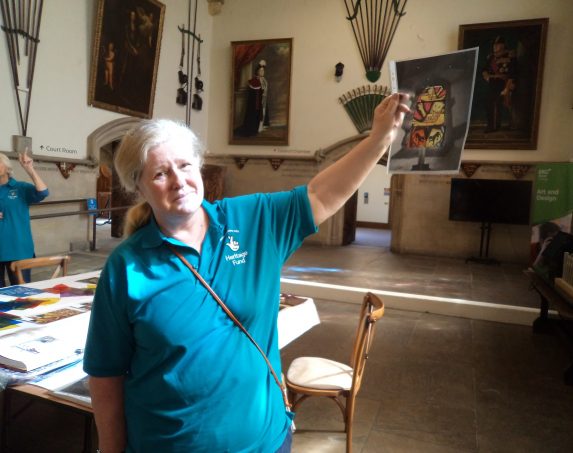
Thus, at the end of the day there was an excited buzz around the room, and it was clear from those who came up afterwards that the day had been a great success. Consequently, in terms of the History Postgraduates, I would like to thank Christine Brandl, Peter and Jane Joyce with JJ, Maureen McMcleod and Jane Richardson, also Grace Conium as well as Jo; all the speakers from Canterbury and Southampton, our audience from Tonbridge to Walmer, the staff at Dover Museum and Jon Iveson for letting us use the Community Cinema.
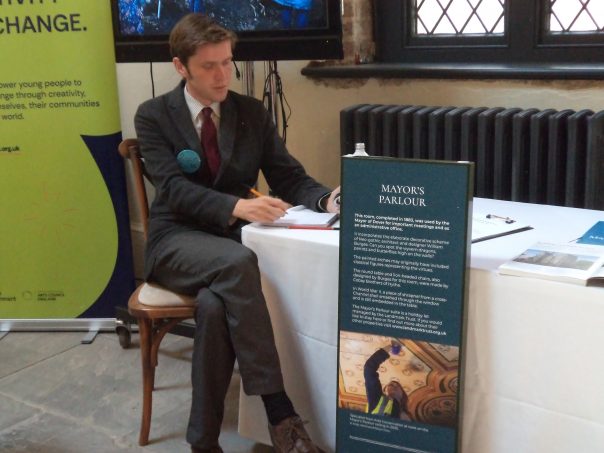
Another success was the re-opening of the Maison Dieu over the weekend and Kieron and I joined the army of volunteers mustered by Martin Crowther at the Maison Dieu on the Sunday. Kieron was stationed in St Edmund’s chapel, the pilgrim hospital’s mortuary chapel while I was in the court room in the main hospital complex and Dr Diane Heath, with her family-friendly activity making small ‘stained-glass windows’ was in the Stone Hall. Furthermore, in the afternoon we were joined by two further MEMS people from CCCU: Noah Brock and Leo Dix, while Michelle Crowther was similarly volunteering, although I’m not sure where because I only saw her first thing in the morning and thereafter our paths didn’t cross. I expect that she was as busy as I was in the court room and Kieron in the chapel. For I had lots of excited visitors who were keen to ask questions about how Dover’s quarter sessions court would have functioned in Victorian times. Being next to the mayor’s parlour, it was clear that visitors were equally impressed and interested in the conservation work that has been undertaken there and for Martin and Jon Iveson (Dover District Council) it is clear that it has been a great weekend! Consequently, if you missed this chance to visit the fabulously restored Maison Dieu, please do check out the website: https://www.maisondieudover.org.uk/ for more dated.
 Centre for Kent History and Heritage
Centre for Kent History and Heritage Sheila Sweetinburgh
Sheila Sweetinburgh 1687
1687

